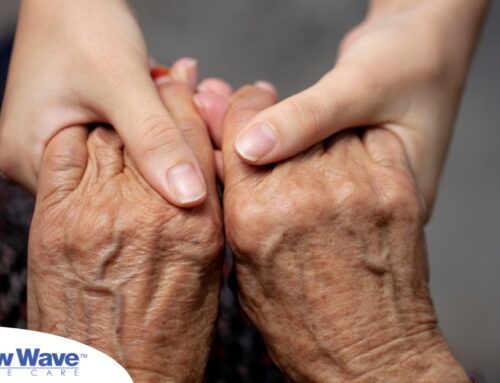It’s no coincidence that American Heart Month takes place during February, which is the month where we unleash Valentine’s Day on an unsuspecting male populace. However, “unsuspecting” is usually the state we’re in, both male and female and old and young when heart disease can strike. These days, heart disease is being far less discerning about its victims that it used to be. Along with seniors, who are generally considered the most prone to risk of heart disease, the conditions that lead to heart disease are occurring to people at younger ages. Therefore, it’s incumbent upon us to be ever more vigilant in taking preventative measures against heart disease.

As long as affairs and matters of the heart are the focus of this month, this is an excellent time to assess your risk for heart disease and the steps you need to take to have a healthy heart.
One of the leading factors in the onset of heart disease, regardless of age, is due to our mass-produced food, which relies heavily on salt, sugar, and corn syrup. As a result, we are experiencing high rates of obesity and high blood pressure among younger people, aged 35 to 64, which puts us at greater risk earlier in life. Currently, half of all Americans have at least one of the top three risk factors for heart disease, which include high blood pressure, high cholesterol, and smoking.
Risk Factors According to the CDC (Center for Disease Control)
High Blood Pressure: High blood pressure affects millions of Americans of all ages, including people in middle age (40-50). To make matters worse, most don’t have it under control, which is one of the biggest risks for heart disease and stroke.
High Cholesterol: High cholesterol increases the risk of heart disease. Having diabetes, obesity, smoking, eating unhealthy foods, and not getting enough exercise or physical activity can all contribute to unhealthy cholesterol levels.
Smoking. Despite all the legislation and awareness-raising regarding the risks of smoking, more than 37 million American adults are smokers, with thousands of young people starting each day. Smoking damages the blood vessels and can cause heart disease. For women, the risks are even greater. Women smokers over the age of 35 have a slightly greater risk of dying from heart disease compared to men who smoke. Compared to men who smoke, women have a greater risk of dying from an abdominal aortic aneurysm, which is a weakening of the main blood vessel that carries blood from the heart to the body.
Is your heart older than you are?
Based on information that can be obtained from heart-age calculators that can be found online from the American Heart Association, on average, adults in the united states have a heart age that is seven years older than it should be.
Other conditions and behaviors that affect your risk for heart disease include:
- Obesity. Carrying extra weight puts stress on the heart. More than one in three Americans are struggling with obesity.
- Diabetes. Diabetes causes sugar to build up in the blood, which can damage blood vessels and the nerves that help control the heart muscle. Nearly one in ten Americans have diabetes.
- Physical inactivity. Staying physically active helps keep the heart and blood vessels healthy. Only one in five adults meets the physical activity guidelines of getting 150 minutes a week of moderate-intensity activity.
- Unhealthy eating habits. Most Americans, including children, eat too much sodium (salt), which increases blood pressure. Replacing foods high in sodium with fresh fruits and vegetables can help lower blood pressure. However, only one in 10 adults eat the proper amount of fruits and vegetables each day. Diet high in trans-fat, saturated fat, and added sugar increases the risk factor for heart disease.
Four Ways to Improve Your Heart Health
On the plus side, you don’t have to live with an unhealthy heart or one that’s at risk. You can take control of your heart’s health at any age—so why not now?
Don’t smoke. Smoking is the leading cause of preventable death in the United States. If you don’t smoke, don’t start. If you do smoke, learn how to quit. If you’re young, don’t start. Quitting smoking was never easy, and is not as easy as it used to be. Cigarette manufacturers have spent 50 years researching ways to make them more addictive.
According to the FDA, Ammonia, which is found in cleaning products, as well as other additives may be added to cigarette tobacco to increase nicotine absorption, making cigarettes more addictive. Some additives are bronchodilators that can open the lungs and increase the amount of dangerous chemicals that are absorbed. These days, it takes a supreme act of will power, and depending on your level of addiction, some pharmaceutical help, either over the counter or physician-prescribed. So, yeah, don’t get started, and if you do smoke, by all means, quit.
Manage risk. Work with healthcare professionals to manage conditions such as high blood pressure and high cholesterol. If your doctor has prescribed any medications for you, make sure you take them. Also, you should educate yourself regarding additional means of preventing and managing high blood pressure and high cholesterol.
Change your eating habits. Diet plays an essential role in overall health, but to focus on maintaining a healthy heart, eat food that’s low in trans-fat, saturated fat, sugar, and sodium (salt). Try to fill at least half your plate with vegetables and fruits and opt for low-sodium options. There’s also a lot of information online regarding additional ways to reduce sodium intake. The American Heart Association and CDC websites are great resources.
Exercise and/or stay active. For most healthy adults, the Department of Health and Human Services recommends at least 150 minutes of moderate aerobic activity. As a general goal, at least 30 minutes a day will do you right. If you don’t have time for a 30-minute walk, break it up into smaller five-minute walks instead. In point of fact, any activity is better than none at all. Also, sitting for too long can adversely affect your metabolism, so get up out of your chair. What’s most important is making regular physical activity part of your lifestyle. You can find a lot of information on the Mayo Clinic website.
New Wave Home Care hopes you’ll make every month heart awareness month.







